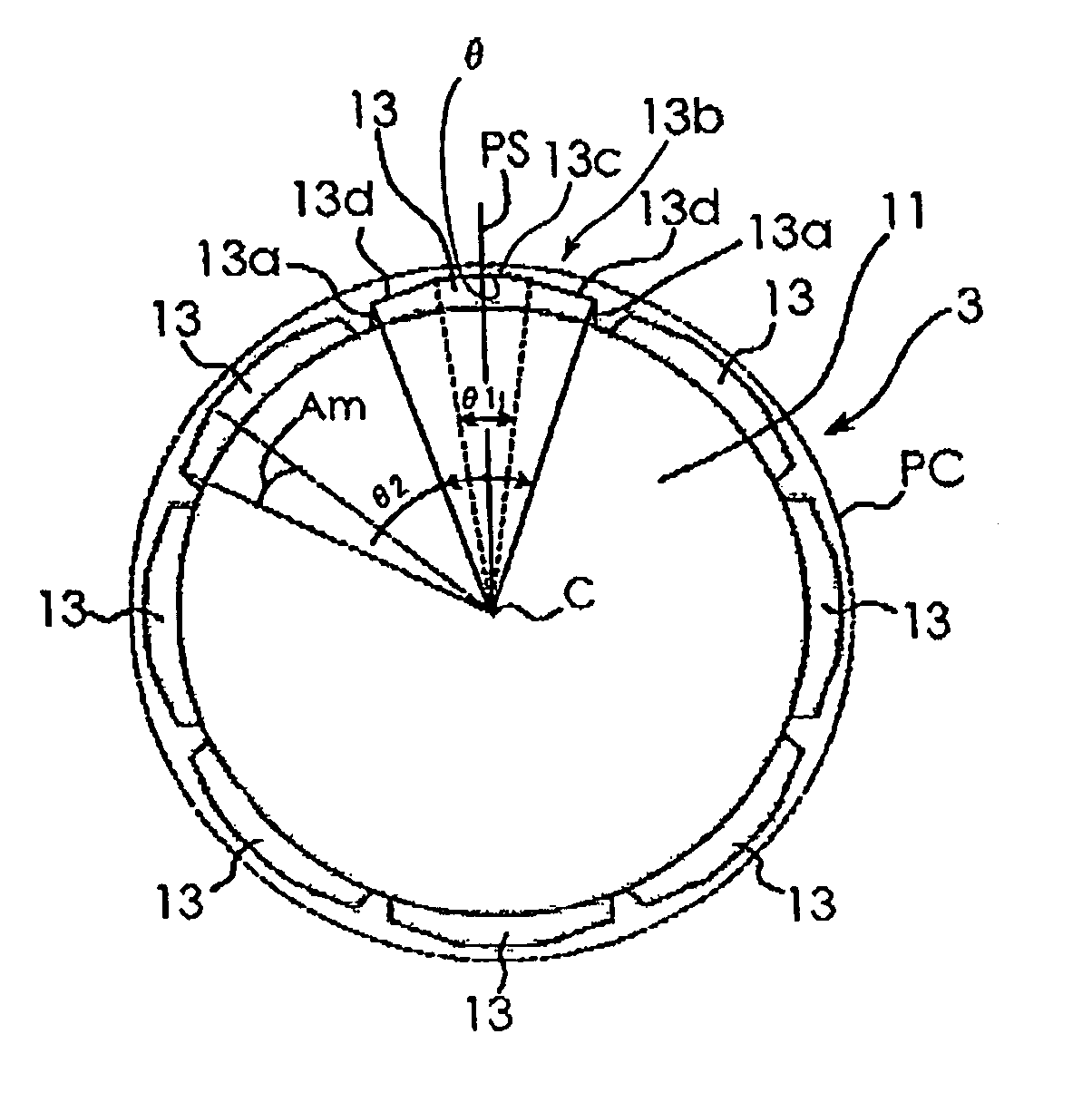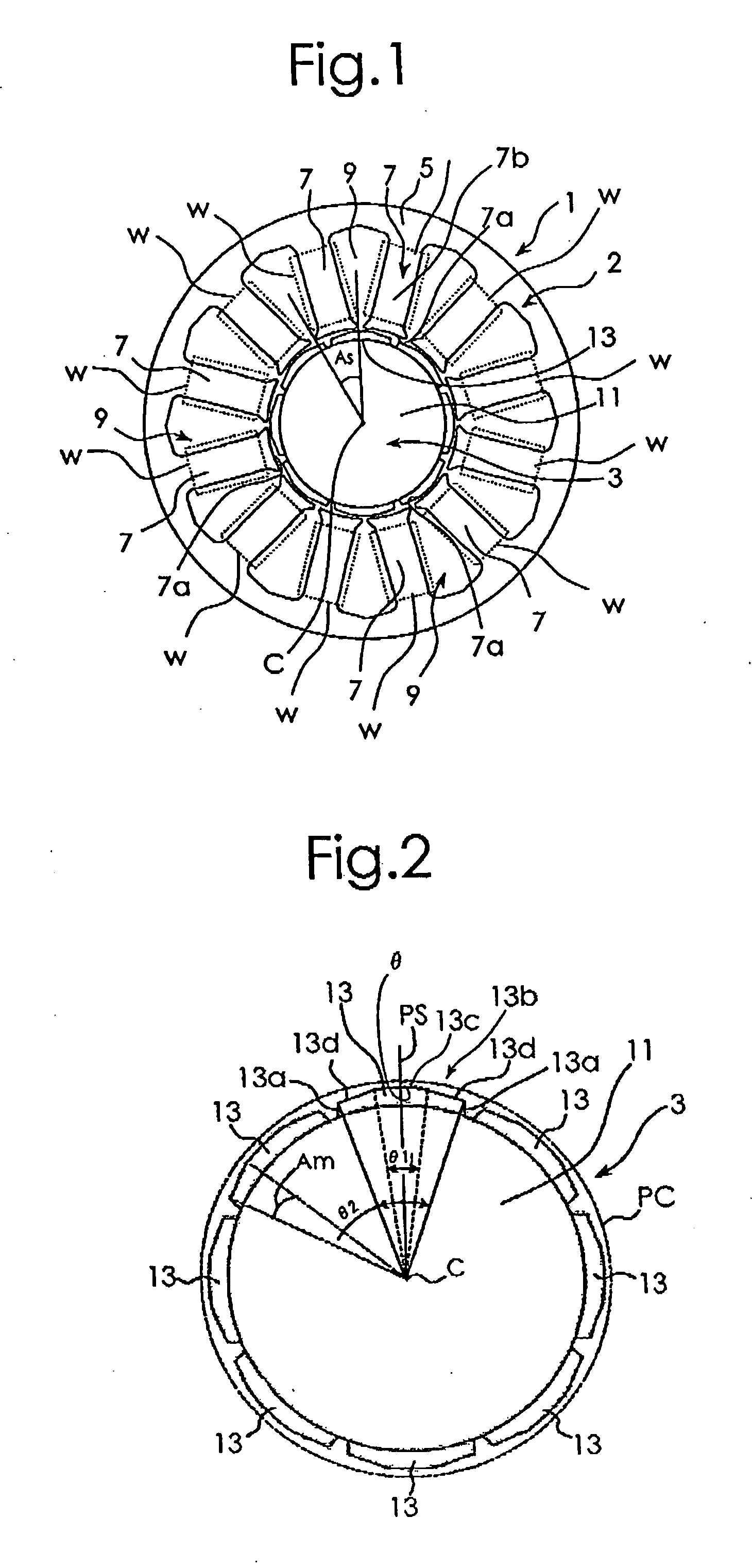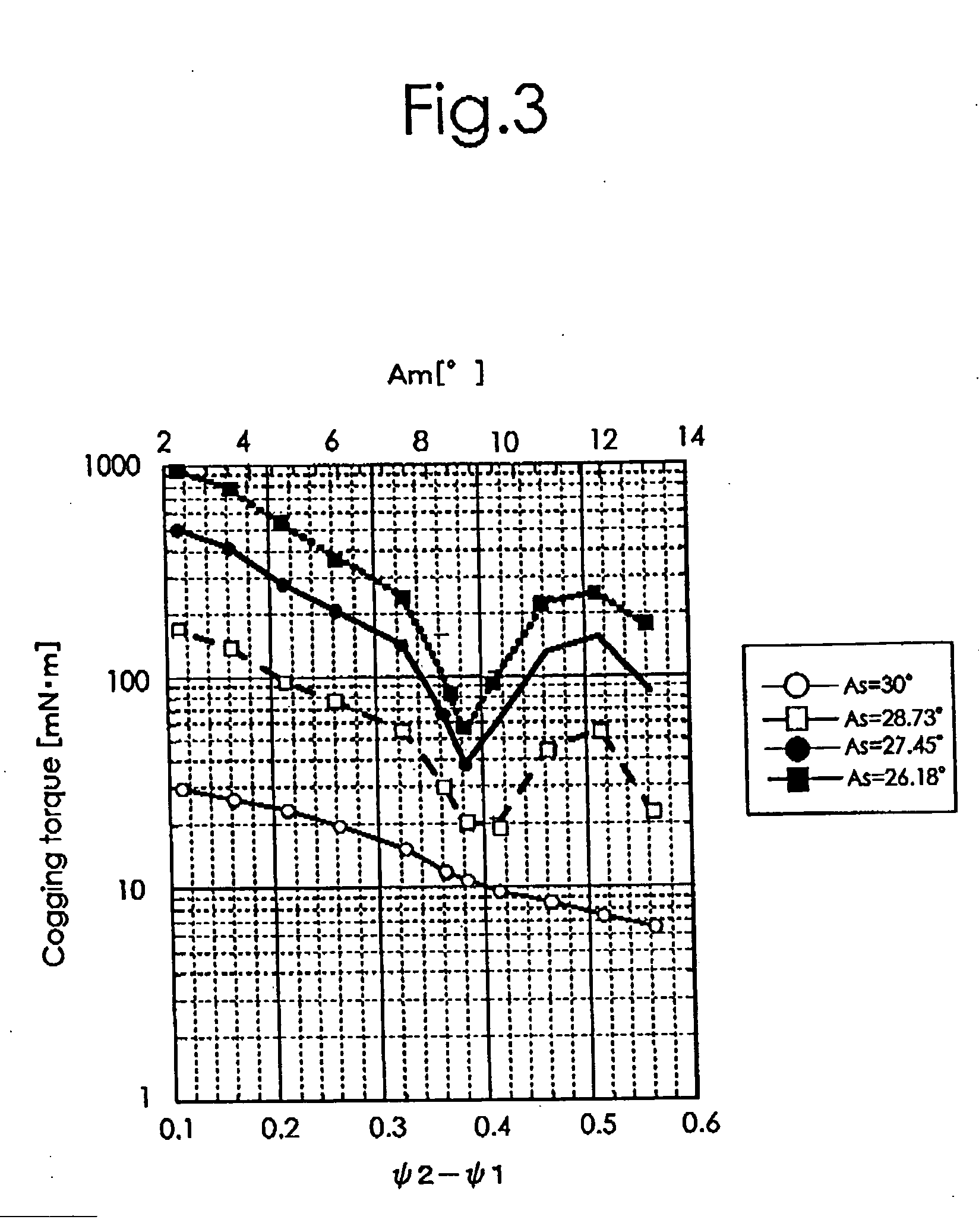Permanent magnet rotary motor
a permanent magnet, rotary motor technology, applied in the direction of dynamo-electric machines, magnetic circuit rotating parts, magnetic circuit shape/form/construction, etc., can solve the problems of reducing torque, reducing motor productivity, and reducing torque, so as to reduce torque and reduce torque. the effect of greatly reducing the torqu
- Summary
- Abstract
- Description
- Claims
- Application Information
AI Technical Summary
Benefits of technology
Problems solved by technology
Method used
Image
Examples
Embodiment Construction
[0020] A best mode for carrying out the present invention will be described with reference to the appended drawings. FIG. 1 is a diagram schematically showing a configuration of and a relationship between a stator 1 and a rotor 3 of a permanent magnetic rotary motor used for explaining an embodiment of the present invention. In FIG. 1, for simplicity of illustration, exciting windings for the stator 1 are not illustrated. FIG. 2 is a diagram schematically showing a configuration of the rotor 3 of the permanent magnet rotary motor in FIG. 1. FIG. 2 illustrates a virtual cylindrical surface PC, which will be described later. As shown in FIG. 1, the stator 1 includes a stator core 2 and the exciting windings W. The stator core 2 includes a cylindrical yoke 5 and N (being 12, herein) magnetic pole sections 7 that extend toward a center C of the stator core 2 from the inner periphery of the yoke 5. Each of the 12 magnetic pole sections 7 has a magnetic pole main body section 7b with an e...
PUM
 Login to View More
Login to View More Abstract
Description
Claims
Application Information
 Login to View More
Login to View More - R&D
- Intellectual Property
- Life Sciences
- Materials
- Tech Scout
- Unparalleled Data Quality
- Higher Quality Content
- 60% Fewer Hallucinations
Browse by: Latest US Patents, China's latest patents, Technical Efficacy Thesaurus, Application Domain, Technology Topic, Popular Technical Reports.
© 2025 PatSnap. All rights reserved.Legal|Privacy policy|Modern Slavery Act Transparency Statement|Sitemap|About US| Contact US: help@patsnap.com



